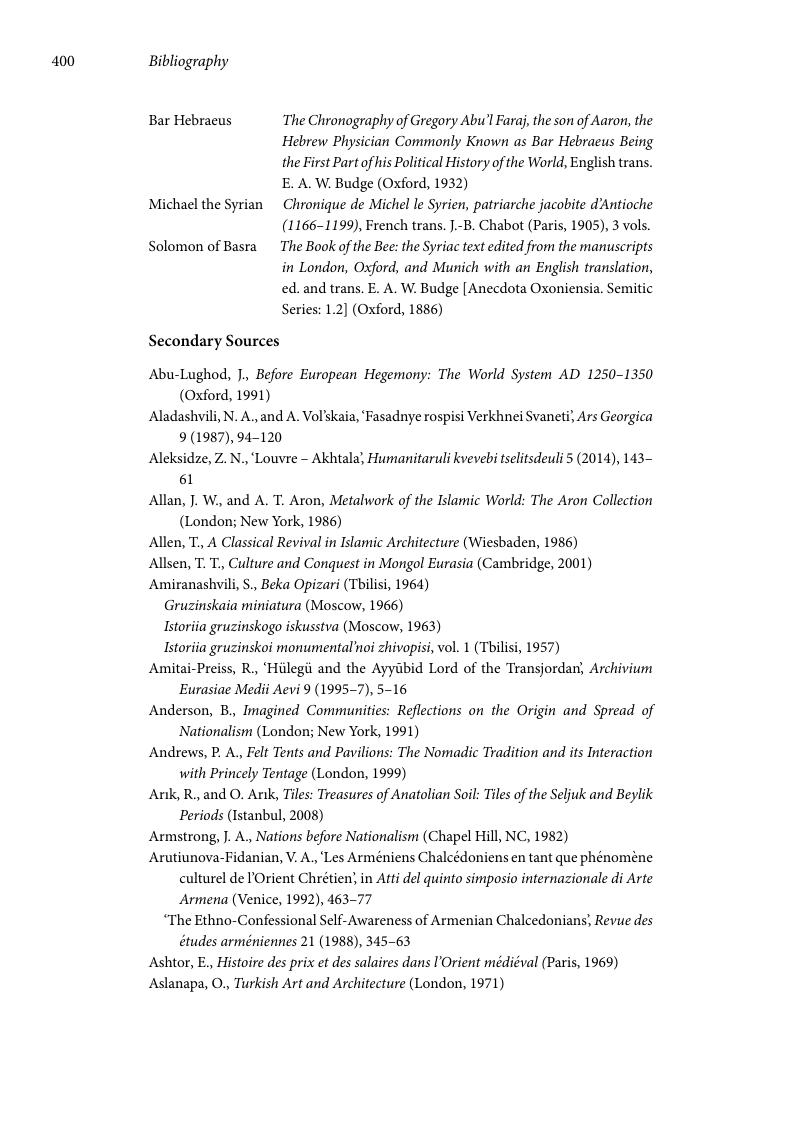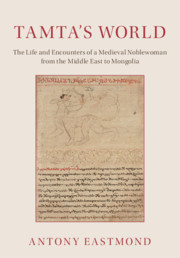Book contents
- Tamta's WorldThe Life and Encounters of a Medieval Noblewoman from the Middle East to Mongolia
- Tamta's World
- Copyright page
- Dedication
- Contents
- Illustrations
- Acknowledgements
- Transliteration
- Abbreviations
- Maps
- 1 A New World of Encounters
- 2 Tamta's Origins
- 3 Tamta, Ivane and Akhlat in 1210
- 4 Al-Awhad and Tamta's First Marriage
- 5 Women and Power
- 6 Akhlat
- 7 Tamta
- 8 Tamta
- 9 Tamta at Court
- 10 Akhlat, Builders and Buildings
- 11 Tamta and the Khwarazmians
- 12 Tamta and the Mongols
- 13 Tamta as Ruler of Akhlat
- 14 Afterlife
- Bibliography
- Secondary Sources
- Index
- Plate Section
- References
Secondary Sources
Published online by Cambridge University Press: 19 May 2017
- Tamta's WorldThe Life and Encounters of a Medieval Noblewoman from the Middle East to Mongolia
- Tamta's World
- Copyright page
- Dedication
- Contents
- Illustrations
- Acknowledgements
- Transliteration
- Abbreviations
- Maps
- 1 A New World of Encounters
- 2 Tamta's Origins
- 3 Tamta, Ivane and Akhlat in 1210
- 4 Al-Awhad and Tamta's First Marriage
- 5 Women and Power
- 6 Akhlat
- 7 Tamta
- 8 Tamta
- 9 Tamta at Court
- 10 Akhlat, Builders and Buildings
- 11 Tamta and the Khwarazmians
- 12 Tamta and the Mongols
- 13 Tamta as Ruler of Akhlat
- 14 Afterlife
- Bibliography
- Secondary Sources
- Index
- Plate Section
- References
Summary

- Type
- Chapter
- Information
- Tamta's WorldThe Life and Encounters of a Medieval Noblewoman from the Middle East to Mongolia, pp. 400 - 424Publisher: Cambridge University PressPrint publication year: 2017



